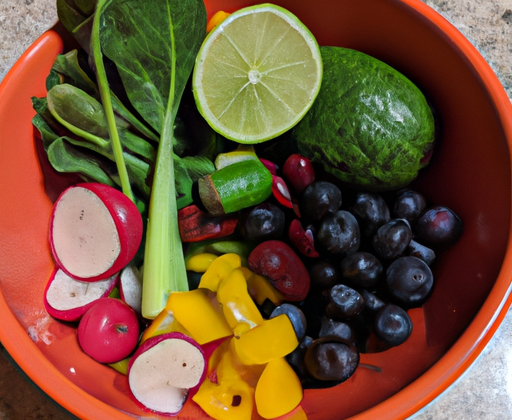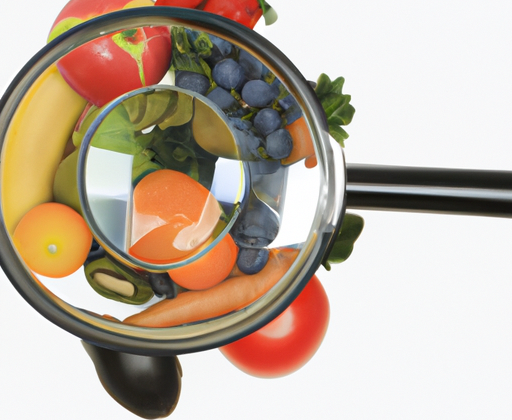My Experience with Food Allergies: An Overview
Greetings, fellow food lovers! As someone who has struggled with food allergies my entire life, I know firsthand how frustrating and challenging it can be to navigate meal preparation, grocery shopping, and dining out. That’s why I’ve put together this article to share some of the useful tips and expert advice I’ve gathered over the years in hopes of helping fellow allergy sufferers.
First, let’s start with the basics. A food allergy is an immune system response to a specific food protein. This response can range from mild symptoms, such as itching or hives, to severe anaphylaxis, which can be life-threatening. It’s essential to take food allergies seriously and take precautions to avoid exposure to allergenic foods.
In this article, we’ll cover several key areas, including different types of food allergies, proper food preparation and storage, meal planning, and safe dining out tips. By the end of this article, you’ll have a solid understanding of how to manage food allergies and enjoy meals without worry.
Types of Food Allergies: Can You Identify What Causes Your Reactions?
I personally know how overwhelming it is to suffer from food allergies. It can be challenging to pinpoint which food or ingredient causes my reactions. Understanding the types of food allergies can help you identify what triggers your symptoms better.
Some common food allergies include peanuts, tree nuts, dairy, eggs, wheat, soy, and shellfish. However, it’s essential to understand the severity of your allergy. Some individuals may experience mild reactions such as hives or a runny nose, while others may experience life-threatening reactions such as anaphylaxis.

Identifying your allergies can help make meal planning and eating out more manageable. It’s important to read food labels to ensure that you’re not consuming any allergens. If you’re unsure, don’t be afraid to ask or double-check with the restaurant or food manufacturer before consuming anything.
Remember to always carry your epinephrine auto-injector with you if you experience severe allergic reactions. Understanding the types of food allergies can help you take better care of yourself and prevent allergic reactions.
Preparing and Storing Food for an Allergy Sufferer
Being an allergy sufferer myself, I know how important it is to keep allergenic foods away from our meals. When preparing and storing food, there are a few things that you should keep in mind.
First and foremost, always wash your hands and surfaces to avoid cross-contamination. It might seem like common sense, but you’d be surprised at how easy it is to forget. I always try to have a designated space in my kitchen specifically for making allergy-free meals. That way, I don’t have to worry about allergens from previous meals lingering on my surfaces.
One of the most crucial steps you can take when preparing food for an allergy sufferer is to separate allergenic foods from non-allergenic foods. This can include using different utensils, cutting boards, and even cooking equipment. For example, I don’t use the same toaster as my non-allergy sufferer housemates, because crumbs could easily get mixed up and cause a reaction.
Labeling foods with allergens is also essential, especially in shared spaces. If you have roommates or family members who aren’t affected by your allergy, it can be difficult to keep track of which foods are safe and which aren’t. Make it easy for them by placing labels on food containers and in the fridge to prevent any confusion or mistakes.
Proper storage of allergens is also crucial. If you have non-allergy sufferer housemates, it might be tempting to put everything all together in the fridge. However, this can lead to cross-contamination and a reaction. I always keep my allergenic foods in a separate area of the fridge and make sure to cover them to avoid any contact with other foods.
Finally, it’s essential to follow proper refrigeration and freezing tips. Some allergenic foods like dairy can easily spoil in warm temperatures. Be sure to check expiration dates and store foods at the correct temperature to prevent any health risks.
By taking these steps, you can ensure that any meals you prepare for an allergy sufferer are safe and delicious. Remember, it’s always better to be safe than sorry.
Meal Planning and Eating Out
Hey there, fellow allergy sufferers! Now that we’ve talked about prepping and storing foods for those with allergies, let’s dive into the world of meal planning and eating out. Trust me, it can be tricky, but it’s not impossible.
First things first, I always plan my meals ahead of time. That way, I know exactly what ingredients I need to buy and can avoid any pesky allergens. When grocery shopping, reading labels thoroughly is crucial. Don’t be afraid to ask store employees for help in locating allergy-friendly options.
When it comes to dining out, I am always sure to let the server know about my allergy. I ask about any potential allergens in the dishes I’m interested in and make sure they understand the severity of my allergy. It’s not a bad idea to bring an allergy card listing your specific allergies to show to the server.
If I’m unsure about the allergy-friendliness of a restaurant, I like to look up reviews and ratings online. There are also websites and apps dedicated to finding allergy-friendly restaurants in your area. It may take some extra effort, but trust me, it’s worth it to avoid any allergic reactions.
The key to successful meal planning and eating out with food allergies is being prepared and doing your research. Don’t be afraid to speak up about your allergy and advocate for yourself. Happy eating!
Wrapping it up: Food Allergies 101
So, that’s all folks – we’ve covered the basics of food allergies. As someone who has personally dealt with this issue, I want to emphasize the importance of understanding the severity of an allergy and taking necessary precautions to avoid exposure.
When it comes to preparing and storing food, washing hands and surfaces, separating allergenic foods, labeling, and proper storage techniques are essential. These practices can prevent cross-contamination and ensure the safety of allergy sufferers.
Meal planning for allergy sufferers can be challenging, but always read ingredient labels, and plan for alternative options for allergenic foods. Dining out can also be a daunting task, but do not hesitate to let the staff know about your allergy and ask questions about the ingredients and preparation of the food.
Overall, educating ourselves and others about food allergies is crucial. Resources such as allergy support groups and specialized medical professionals can provide valuable insights and assistance. Let’s make sure everyone has the knowledge they need to stay safe and healthy while enjoying their meals.
Food Allergy Safety FAQs
What is one way to keep customers with food allergies safe?
When it comes to storing food for someone with an allergy, you need to make sure you take extra precautions. It’s not just a matter of putting it in the fridge or freezer, but rather ensuring that the food doesn’t come into contact with anything that could trigger an allergic reaction. One way I like to keep customers with allergies safe is by using a separate area to store their food. That could mean having a designated shelf or section of the fridge or freezer, or even a separate storage unit altogether. By doing this, you can help prevent cross-contamination and reduce the risk of an allergic reaction.
Additionally, labeling is essential in ensuring that the food stays safe for those with allergies. You can use different colored labels or even stickers to identify which foods are safe to eat and which ones should be avoided. Be sure to read labels carefully and list all ingredients on the labeling. With these precautions in place, you can ensure that your customers with allergies feel safe and confident when choosing food products.
Where should allergies food be stored to avoid cross contamination?
First off, it’s important to know that cross-contamination can occur when an allergen comes into contact with safe food. That being said, I make sure to always store allergy-friendly foods separately from the rest of the groceries. I use different shelves in the fridge and pantry, and I even label the containers with the allergen and a warning to prevent any confusion. Another great tip is to use dedicated utensils and cookware for allergy-friendly meals. This can help prevent cross-contamination during preparation and cooking. I also make sure to clean them thoroughly before and after use to avoid any accidental exposure. It’s also important to carefully read food labels and check for ingredients that may cause an allergic reaction. I avoid foods that contain any of the allergens, and I also check for any potential cross-contamination warnings. Lastly, I make sure to always wash my hands before and after handling any allergy-friendly food to prevent any accidental contact with allergens. By taking these steps, I can feel confident that the food I am serving is safe for my loved one with allergies.

